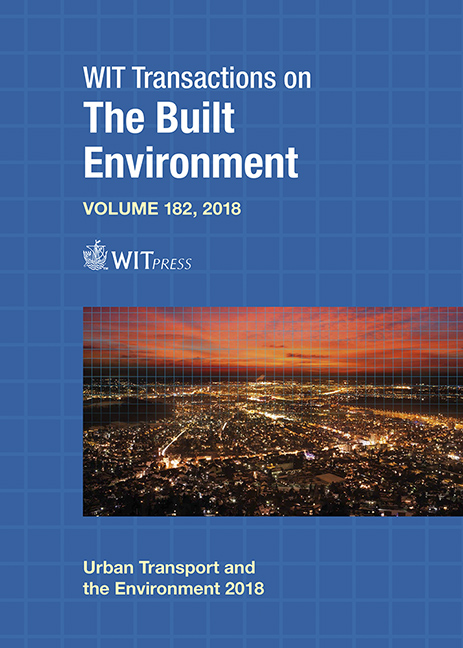SUSTAINABLE URBAN MOBILITY AND URBAN SAFETY AND SECURITY: A CASE STUDY OF THE CITY CENTRE OF GENOA, ITALY
Price
Free (open access)
Transaction
Volume
182
Pages
12
Page Range
187 - 198
Published
2019
Paper DOI
10.2495/UT180181
Copyright
WIT Press
Author(s)
SELENA CANDIA, FRANCESCA PIRLONE, ILENIA SPADARO
Abstract
The SUMP – Sustainable Urban Mobility Plan – introduced by the European Union in 2013, is a strategic mobility tool intended to promote sustainable activities at an urban level. The SUMP wants to improve the quality of life of citizens and to involve people and stakeholders in the decision-making process. The “Bremen Declaration on Sustainable Urban Mobility Planning in Europe” (2016), has definitely defined that a good SUMP should: integrate the mobility planning into urban planning; support environmental, social and economic sustainability; and adopt an urban vision giving priority to people rather than vehicles, promoting pedestrian and cycling mobility. The paper joins the ongoing debate on sustainable mobility considering another aspect that should be included in the SUMP: urban safety and security. The authors put into relation the concepts of safety and security with the concept of sustainability. Currently, also the most innovative plans consider urban safety and security only with regard to road accidents. Although this last aspect is of paramount importance, we should be careful not to overlook a more global approach to safety and security. A place is considered safe in relation to its crime rate, risk perception, environmental or social degradation. The research intends to define a new approach that considers a rather broader and deeper view of the issue of urban safety and security within the SUMP. The methodological approach initially uses the SWOT (Strengths, Weakness, Opportunities and Threats) analysis to investigate the state-of-the-art of the SUMPS toll. The authors identified a series of indicators – objective and subjective – to measure urban safety and security. Subjective indicator aims at quantifying the perception of risk by the population, which lives, studies, works in the urban area under study. Finally, the authors applied the methodology proposed in this article to the city centre of Genoa.
Keywords
PUMS, sustainable mobility, urban safety and security





